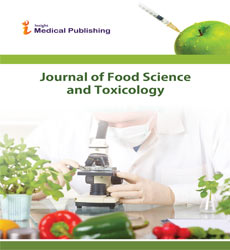Production and identification of Staphyloferrin A from Clinical specimens collected from patients infected with Staphylococcus aureus
Abstract
Staphyloferrin A (SA) is a main hexadentate siderophore produced from pathogenic Staphylococcus aureus under iron-depleted condition SA (MW = 479 Da) is composed of one D-ornithine and two citrate molecules bound with amide bonds in both side through a non-ribosomal peptide synthetase-independent pathway. It chelates iron in mild acidic environment such as skin due to carboxylic moiety. Presently, siderophores are attracting a great deal of interest in ecology, agriculture, biotechnology, biosensors, pharmaceuticals and medicine. Probiotic bacteria have been increasingly proposed as health promoter in variety of food system, due to its safety, functional and technological characteristics. We aims to identify SA in clinical specimens and investigate the iron-chelating activity. The specimens were collected from patients at Maharaj Nakorn Chiang Mai Hospital, Thailand and conformed S. aureus using biochemical tests. The bacteria were cultured in a medium containing different iron concentrations, tested SA using a chrome azurol S (CAS) method and identified sfnaB and sfnaD genes using PCR. Archived specimens were included hemoculture (n = 11), urine (n = 8), pus (n = 41), sputum (n = 35), tissues (n = 3), fluid (n = 1) and 1 skin scrap (n = 1). Consistent with a reference S. aureus ATCC 25923, the medium gave positive catalase and coagulase results and CAS test. Interestingly, 1 ïÂM Fe in the medium was optimal for producing SA in the 83 of the 100 specimens but did not support the SA production in the remaining specimens. Apparently, the pus produced the most potent chelating activity which was stronger than the reference strain. Intensively, PCR result is required to confirm SA genes. In the findings, SA can be produced successfully and massively, which will be applied for anti-skin bacterial agent and iron-SA fortified food products. Thus, SA safety must be further investigated in vitro and in vivo
Open Access Journals
- Aquaculture & Veterinary Science
- Chemistry & Chemical Sciences
- Clinical Sciences
- Engineering
- General Science
- Genetics & Molecular Biology
- Health Care & Nursing
- Immunology & Microbiology
- Materials Science
- Mathematics & Physics
- Medical Sciences
- Neurology & Psychiatry
- Oncology & Cancer Science
- Pharmaceutical Sciences
